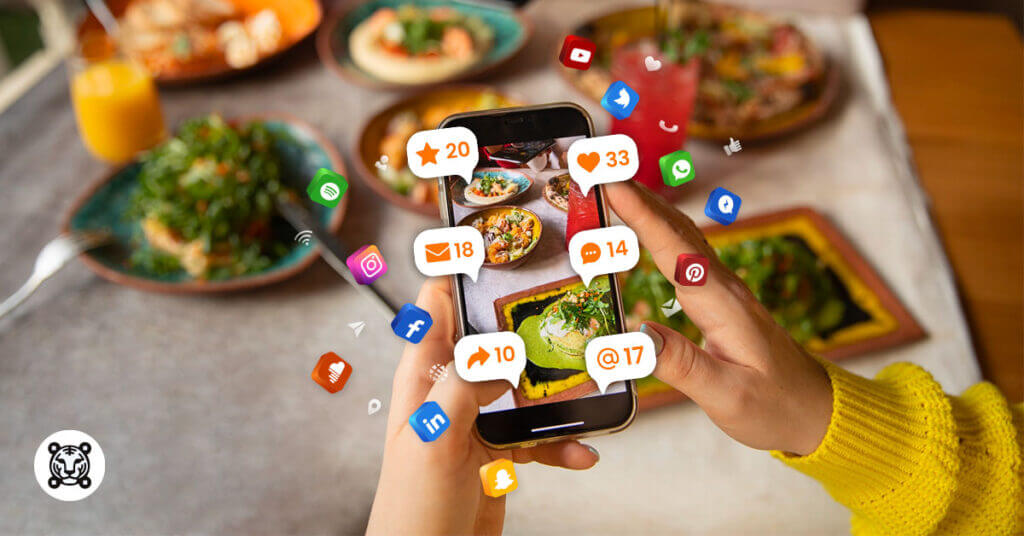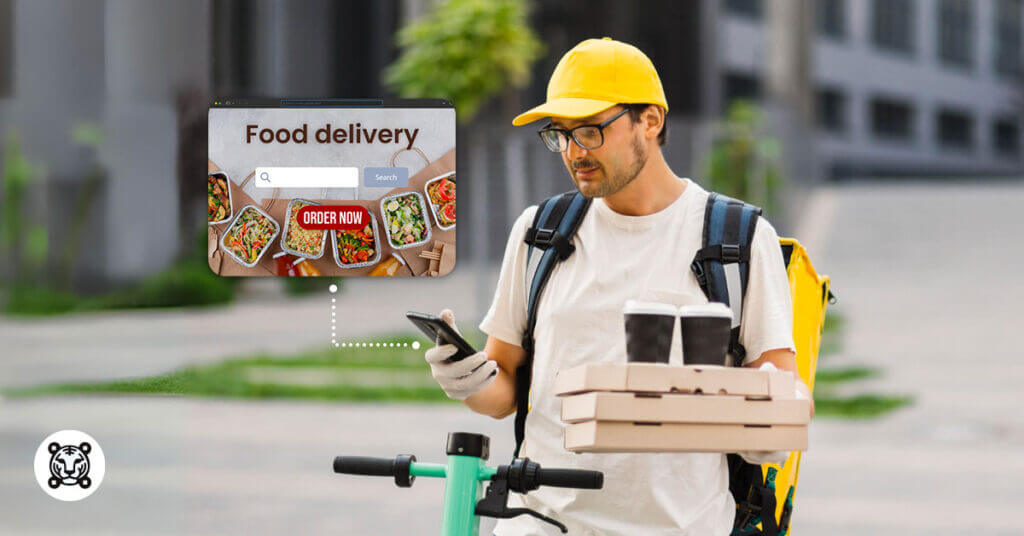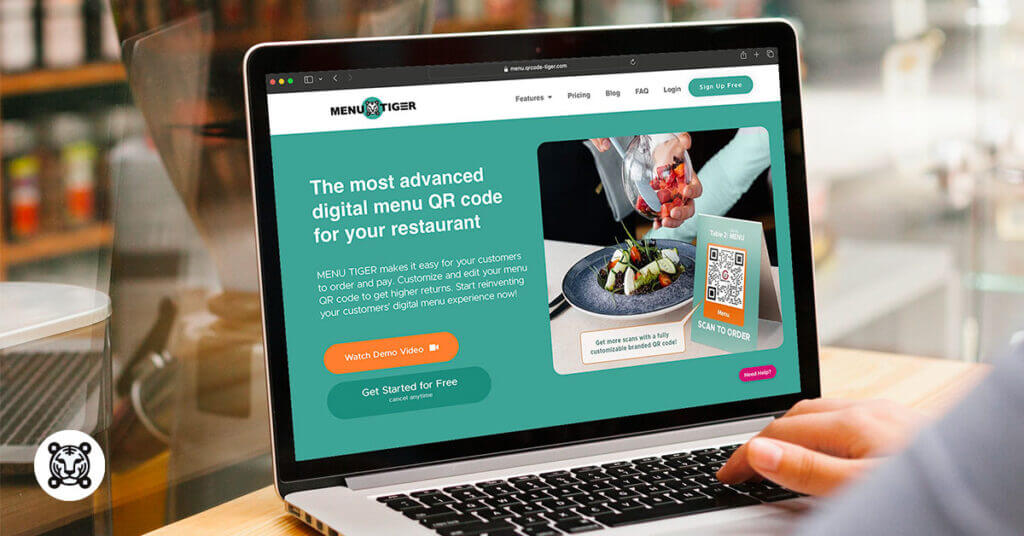
How To Set Competitive and Realistic Restaurant Goals
Last Updated: March 17, 2025
Keeping a restaurant business afloat requires more than just a passion for flavors—it demands a strategic vision and well-defined restaurant goals.
As someone who works in this field, we know how competitive the industry can get, so setting ambitious but attainable objectives is a delicate art and a crucial part of the business.
These goals will then serve as your guide that assists you in making the right decisions.
But if you’re in the dark when it comes to formulating realistic goals for your restaurant, don’t fret.
Here’s a comprehensive guide on how to develop your business goals and objectives using modern strategies and interactive restaurant menu software.
How to set SMART goals for restaurant businesses

Remember when you first started your business and you were coming up with an achievable restaurant business plan template comprising your mission and vision?
This is almost the same with that process. But requires more precision.
Applying the SMART goals for restaurants helps create well-defined targets that are easier to understand, track, and achieve.
Additionally, regularly reviewing and adjusting goals based on progress and changes in the business environment are essential to maintaining relevance and effectiveness.
Here’s a guide on how to apply the SMART strategy to restaurant goals:
Specific (S)
Clearly define what you want to achieve. You need to be specific about the goal and avoid using vague language.
For example, instead of setting a general goal like “increase sales,” you can specify it as “increase dinner sales by 15% within the next quarter.”
If you’re going to lead your restaurant business, you’ll need to be clear about where it’s heading right from the get-go.
Measurable (M)
You have to establish concrete criteria to track progress and measure your success efficiently.
This means that you need to set a specific number, use various calculations, or even benchmark from your competitors to see if your restaurant’s thriving or not.
Here’s an example: Rather than “improve customer satisfaction” as your main goal, you can set a more measurable goal like “achieve a 5% increase in customer satisfaction scores based on feedback surveys within the next six months.”
Achievable (A)
Being too idealistic when it comes to establishing business goals isn’t ideal.
Make sure that the goal is realistic and attainable, given the restaurant's resources, time, and other constraints.
If your current monthly revenue is $50,000, aiming for a 50% increase in a short period might not be achievable. A more realistic goal could be a 10% increase.
Relevant (R)
Align the goal with your restaurant's overall vision and mission. It should contribute to the long-term success and growth of the business.
Suppose the restaurant’s mission is to provide healthy dining options. In that case, a relevant goal might be “introduce a new menu with at least three additional healthy and sustainable food options within the next two months.”
Setting up a goal that’s irrelevant to your mission and vision will affect how your customers perceive your restaurant.
Cohesion is key when coming up with the goals and objectives of a restaurant. This will help you better establish good restaurant branding that boosts your marketing strategies and overall operations.
Timely (T)
You need to set a specific timeframe for achieving the goal. This adds urgency and helps in tracking progress.
For instance, instead of “improve online presence,” make it more time-bound by saying, “increase social media engagement by 20% in the next month.”
11 short-term and long-term restaurant goals
Increase revenue
Increasing revenue is a fundamental goal for any restaurant seeking sustained growth and profitability.
A specific and measurable objective could be to, let’s say, “increase overall sales and revenue by 15% over the next six months.”
To achieve this, you can focus on a combination of strategies, such as:
- Analyzing and optimizing the menu to highlight high-margin items
- Implementing targeted marketing campaigns to attract new customers
- Introducing promotions to encourage higher spending per customer
Additionally, enhancing the overall dining experience, perhaps through staff training or ambiance improvements, can contribute to increased customer satisfaction and repeat business, further supporting your revenue growth goal.
Improve customer satisfaction
To achieve this objective, focus on initiatives such as analyzing customer feedback through surveys or online reviews to identify areas for improvement.
For instance, if feedback consistently mentions slow service, address it by implementing more efficient workflows or hiring additional staff during peak hours.
Enhance the overall ambiance, including decor and lighting, for a positive dining experience, leaving a lasting impression that increases the likelihood of customer return.
Additionally, be transparent about pricing, including service fees at restaurants, to manage customer expectations and avoid misunderstandings.
Clear communication about added charges, whether for large parties or premium service, can contribute to a smoother dining experience and greater satisfaction.
A customer-centric strategy not only boosts satisfaction but also builds a loyal customer base for sustained business growth
Boost online presence

To enhance the restaurant’s online presence, the goal is to improve visibility across various digital platforms strategically.
This involves developing a robust social media strategy to engage with the target audience through platforms like Instagram, Facebook, TikTok, and X (formerly Twitter).
You can post your restaurant’s menu offerings, special events, and behind-the-scenes glimpses to attract potential customers.
Additionally, encouraging satisfied customers to share their experiences on online review sites like Yelp and Google Review can significantly boost the restaurant’s online reputation. This makes it more enticing to potential patrons who often rely on reviews for decision-making.
Enhance menu offerings
By staying proactive in updating the menu, you can satisfy your current customers and attract new ones seeking diverse and contemporary dining experiences.
This approach ensures that your menu offerings align with evolving tastes and dietary preferences, contributing to sustained customer engagement and loyalty.
You can do this by conducting regular market research to identify emerging food trends, analyze customer feedback, and monitor industry developments.
For instance, if there’s a growing demand for plant-based options, you can introduce innovative vegetarian or vegan dishes to cater to this trend.
You can also get inspiration from seasonal changes or special events to introduce limited-time menu items.
Optimize operational efficiency
If you aim to optimize operational efficiency in a restaurant, you need to strategically focus on internal processes with the aim of enhancing productivity and minimizing operational costs.
For example, you may implement a point-of-sale (POS) system to streamline order processing, reduce errors, and expedite transactions.
You can also integrate inventory management software to help with the real-time tracking of stock levels, prevent overstocking or shortages, and minimize waste.
Staff training programs are also a great way to achieve this goal.
You can streamline your restaurant operations if the staff are able to multitask, ensure efficient workflow, and manage their time and tasks well.
Employee training and development
Investing in staff training enhances skills and empowers employees to meet customer expectations.
For instance, fine dining establishments may introduce specialized training on wine pairings and service etiquette.
Customer service training equips staff with effective communication and conflict resolution skills, collectively elevating service quality.
This investment ensures individual and overall improvements, creating a positive dining experience, fostering customer satisfaction, and contributing to long-term success.
Implement sustainable practices
This involves adopting eco-friendly initiatives to minimize operational ecological impact, attracting environmentally conscious customers.
You can source locally produced, organic ingredients to reduce your transportation carbon footprint and support local farmers.
Implementing waste reduction strategies like composting and recycling, along with using energy-efficient appliances, demonstrates a commitment to sustainability and appeals to eco-conscious patrons.
Expand customer base
Expanding the customer base in a restaurant involves attracting new patrons through strategic restaurant marketing efforts and promotions.
You can implement targeted campaigns to reach specific demographics or geographical areas.
For example, leveraging social media platforms to run geo-targeted ads or collaborating with local influencers to promote the restaurant can effectively broaden its reach.
Even better, offering limited-time promotions, such as discounts for first-time customers or special events, can serve as enticing incentives.
By tracking the success of these marketing initiatives through metrics like new customer acquisition rates, the restaurant can refine this approach and continuously adapt to evolving consumer preferences.
Improve online ordering and delivery services

This goal includes refining your website or mobile app interface, ensuring easy navigation, and incorporating features like personalized recommendations and a streamlined checkout process.
And if you plan on enhancing your delivery logistics, you can explore partnerships with efficient third-party delivery services or form an in-house delivery team.
Try distributing QR code menu in public places to reach a wider audience. Once they scan the code, potential customers will be redirected to your online menu where they can complete an order.
Through these strategies, you can effectively meet your customers’ expectations while capitalizing on the growing trend of online food ordering.
Community engagement
This is a critical goal for restaurants aiming to establish a strong rapport with their local surroundings.
You can reach this goal by:
- Organizing regular community events such as food festivals, charity dinners, or live music nights
- Collaborating with local businesses and organizations to establish or solidify partnerships
- Supporting local causes through initiatives like fundraising for local charities and projects.
This comprehensive approach to community engagement boosts your brand image and builds a loyal customer base.
Monitor and analyze Key Performance Indicators (KPIs)
To ensure your restaurant’s success, it’s crucial to set a goal focused on monitoring KPIs like table turnover rate, customer retention, and average spending per customer.
Tracking these metrics provides insights into operational efficiency and customer satisfaction, guiding strategic adjustments for improved service and profitability.
This data-driven approach promotes adaptability and informed management practices, contributing to the restaurant’s overall success.
Setting personal goals for your restaurant staff

Having individual goals for each restaurant staff member helps align their efforts with the overall business objectives, fostering a sense of purpose and accountability.
Tailoring SMART goals for restaurant roles ensures that each staff member contributes effectively to their department’s success.
Restaurant manager goals
- Leadership development
- Financial management
- Customer satisfaction improvement
- Team building
- Stay updated on industry trends
Restaurant server goals
- Upselling skills
- Customer service excellence
- Product knowledge
- Time management
- Personalized service
Restaurant kitchen staff goals
- Menu innovation
- Efficiency in prep work
- Safety and hygiene
- Cross-training
- Waste reduction
How to use interactive restaurant menu software to achieve SMART goals for your restaurant

Executing strategies to bag your goals is quite challenging. You’ll need to consider financial projections, current trends, customer data, branding, and marketing strategies.
It’s not unusual to find out that you’ll need more than one restaurant system and other investments to help you.
This will definitely cost you a lot.
But here’s a tip: you can look for a tool or software that has all the features to help you realize your restaurant marketing goals.
MENU TIGER is a trusted food ordering software that offers multiple features that can help restaurant owners manage their business.
Since it’s an all-in-one software, you don’t need to look for other restaurant systems to facilitate your everyday operations.
This one software is enough, making it a practical option.
Here’s how you can use the software for your short-term and long-term goals:

Use the call button system for faster service
MENU TIGER’s restaurant waiter call button system is like a built-in pager or buzzer that notifies staff when customers are in need of assistance.
Rather than gesturing for waitstaff to call out their attention, your customers can simply click a button on your MENU TIGER-powered website.
Instantly, a staff with access to the dashboard will see this notification, allowing them to promptly attend to the customers.
This reduces service delays, especially during peak hours when the restaurant is packed with diners.
Leverage QR code menus for contactless ordering
QR code menus are a booming restaurant technology that enhance the efficiency of ordering and payment, reduce physical contact, and improve customer experience.
This is MENU TIGER’s best feature. It streamlines the ordering process, allowing for quicker table turnover and increased revenue.
Plus, with this smart menu, you can address safety concerns, attract customers who prioritize contactless transactions, and provide valuable data insights for informed decision-making.
Customize your webpage for enhanced online presence
One note-worthy feature you can use in MENU TIGER is the website developer.
What’s great about this is you don’t need coding or any programming skills to establish your own functional website.
All you have to do is personalize it through MENU TIGER’s beginner-friendly tools.
You can upload high-quality images, choose your typeface, add pages, and display your digital menu.
A well-designed website with appealing visuals, user-friendly navigation, and updated content can attract and retain customers, align well with your restaurant themes for branding, and drive increased online orders in the process.
Generate surveys and feedback to address customer concerns
MENU TIGER’s feature to generate surveys and feedback provides restaurant owners with a direct avenue to understand and address customer concerns.
By collecting valuable insights, owners can identify areas for improvement, enhance customer satisfaction, and tailor their offerings to meet customer preferences.
This real-time feedback loop fosters a positive dining experience and contributes to the achievement of your business goals.
Encourage customer login to generate an email list
When your customers wonder how to scan a menu through their phones, present them with your QR menus.
In a scan, your customers may be redirected to an online page that will prompt them to log in using their active email address and a password.
You can take advantage of this crucial step in the ordering process by encouraging your customers to sign up or log in.
Automatically, the email list will be recorded by the software, which you can readily access on the dashboard’s menu.
This generated list can be used when sending campaigns, promos, and other updates about your restaurant so you can keep your customers in the loop and encourage repeat business.
Activate plans for analytics access
An active MENU TIGER account provides restaurant owners with valuable customer analytics, allowing them to make informed business decisions.
By accessing data on customer preferences, order patterns, and peak hours, owners can tailor menus, optimize operational efficiency, and create targeted marketing strategies.
This data-driven approach enhances customer satisfaction and increases your restaurant revenue.
Clinch your restaurant’s goals with MENU TIGER
Whether aiming to boost revenue, enhance customer satisfaction, or streamline operations, the key lies in aligning objectives with the unique dynamics of the business.
Remember, your goals should be as dynamic as the industry itself, adapting to changing trends and customer expectations.
For an extra edge, consider leveraging technology like MENU TIGER, an invaluable QR code menu software that turns data into insights, helping you set and achieve your restaurant goals.
Try its features by creating an account for FREE!

FAQs
Belle
Belle Boralo is a seasoned Content Writer specializing in SaaS and marketing content, known for boosting website traffic. Her background in writing essays and journalism and her love for the outdoors infuse her work with a unique and vibrant energy.


